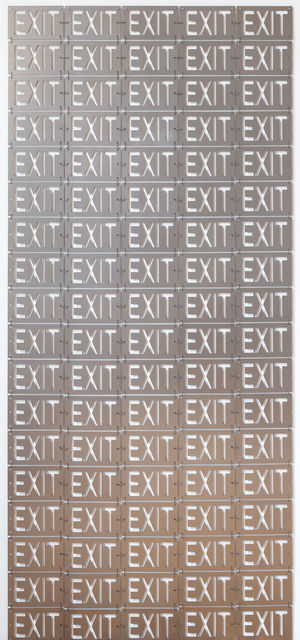
In his second solo exhibition at Stigter Van Doesburg, Lucas Lenglet (Leiden, 1972) shows a series of new works in which he explores the idea of "prepping". Preppers, from the verb ‘to prepare’, also called ‘survivalists’, are preparing for the end of the world. In order to survive in an emergency, they strive for a high degree of self-sufficiency and autonomy. For example, they stockpile food, grow their own vegetables, learn how to hunt wild animals and train in self-defense techniques. In short preppers are concerned with the question of how to create your own safe place, separate from the threatening outside world. In today's world, this question has a great urgency, but also a somewhat bitter undertone. The preppers' idea of The End Of The World As We Know It, also known by its acronym TEOTWAWKI, is especially popular among conspiracy theorists and doomsday thinkers.
In his work, Lenglet has long been concerned with thinking about security and threats and mechanisms of inclusion and exclusion. His focus was often on architecture and constructions that are intended to keep out the perceived danger. In the new works he focuses his attention on what is needed if you can only be within that boundary. Strategically distributed throughout the gallery space are ceramic pots filled with rice, beans and dried pulses, two tall towers of empty pots on glass plates and a bench made of iron grids. What do you need to survive?
Lenglet's new work marks not only a shift from outside to inside, from the exterior to the interior, but also a change in his choice of materials. Where he previously made extensive use of industrial materials – in line with the harshness of the 'architecture of safety' – Lenglet now opts for materials that are more earthy and artisanal, or even very fragile and only suitable for use indoors and with care.
Complementary to his installation at Stigter Van Doesburg, Lucas Lenglet presents a work on the facade of his own home, made at the invitation of Welcome Stranger. Building on previous works with cage structures, Lenglet places red metal mesh in front of all the windows of his corner house, transforming his own home into a cage. "I see it as an impetus to think about what position I have in the community in which I live: to what extent am I expected to participate, how much from outside do I allow and what relationship do I enter into with the other?"
In a world subject to major changes due to the outbreak of the COVID-19 virus and the resurgent fight against racism, the questions that Lenglet's work raises about freedom and captivity, about private and public space, about inclusion and exclusion, are more urgent than ever.